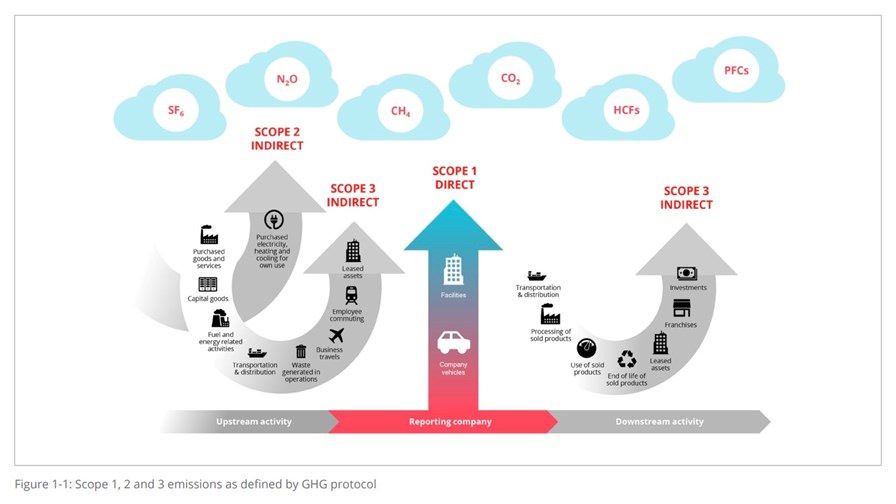
Source: ‘Green Future Networks: Telco Supply Chain Sustainability’ - NGMN
- NGMN has issued a report on the biggest sustainability-related pain points for telcos
- Emissions produced within operators’ supply chains are significant and reduction is critical
- The main challenges are transparency and granularity of data provided by suppliers, according to the alliance
- It recommends a number of measures that telcos can adopt within their supply chains
Although the mobile industry is regarded by some as a leader in the race towards net-zero emissions and setting climate action targets in alignment with the Paris Agreement, the Next Generation Mobile Networks Alliance (NGMN) has outlined numerous challenges faced by telecoms players globally when it comes to cutting carbon emissions within their supply chains.
In its latest publication, ‘Green Future Networks: Telco Supply Chain Sustainability’, the association highlighted that “a significant portion” of carbon emissions attributed to mobile operators are generated not directly by them but within the value chain and, therefore, it is of “critical importance” to ensure their suppliers are as environmentally sustainable as possible.
The alliance points out that the size, diversity and complexity of supply chains creates a number of challenges, and that these issues “generally relate to integrity and uniformity of the data, but also to the need to balance multiple coexisting goals”.
To tackle this, the NGMN outlined a list of requirements to achieve integrity and data comparability, including boundaries within a complex and heterogeneous supply chain; data availability, disclosure and granularity; traceability (of data flow, as well as the product and financial flows); uniformity and a standard approach in reporting; and insights and visibility in procurement to enable appropriate decisions and actions.
What can telcos do?
In its report, the NGMN advises operators to take action to address supply chain-related emissions. It suggests companies “move from linear value chains to circular ones”, which means “rethinking and reconnecting supply chains – looking at adding value to complete systems rather than individual process steps”.
The alliance also recommends novel approaches in the design of products, including “extending the life of products from the outset and ensuring that reuse and recycling is built in”.
Additionally, companies should consider the impact of the materials or products they choose for their operations, products and services. They are also advised to engage with customers and encourage them to adopt more circular and energy-efficient behaviours. The report highlighted measures taken by some telcos, including eco-design, management systems, energy efficiency and renewable energy usage, product modularity and recycling, reduction of waste, organisational focus and supplier engagement.
Another recommendation involves identifying the companies in the supply chain with the largest emissions – that is to say those contributing the most to the Scope 3 (produced within the supply chain) upstream emissions, as well as requesting suppliers set public targets “to halve absolute emissions by 2030 and align with the 1.5°C target”.
According to the NGMN, telcos can also “significantly reduce their emissions by changing their procurement policy in a way that supports purchasing from the suppliers with lower footprints”. In that sense, if sustainability criteria are implemented along with technical and commercial aspects, pressure is put on suppliers “as it directly impacts the business of those companies”.
Interested in this topic? Then register for The Green Network Summit (25 - 26 January) and hear what executives from American Tower, BT, Deutsche Telekom, Orange, Telenor, Telefónica, Vodafone and many other leading telecom companies have to say about energy-efficiency targets, sustainable supply chains, how best to monitor network power consumption, and much more.
The alignment of business goals and operational policies with greenhouse gas (GHG) reduction measures (for instance, addressing “significant” commuting and business travel emissions) is recommended, as is a “systematic way” of handling challenges around conflicting objectives, such as when choosing between better the energy performance of a new product or the higher resource efficiency achieved by using a refurbished product.
CEO of the NGMN, Anita Döhler, has identified green future networks as a core strategic priority of the association. She explained that this report is the first publication of several scheduled for 2023, and that “it is apt that it is covering the supply chain where collaboration between operators and their partners is so critical to both parties’ success in tackling climate change”.
According to Arash Ashouriha, SVP of group technology at Deutsche Telekom and NGMN board chairman, the mobile industry is meeting the challenge of cutting carbon emissions head-on. “Our work at NGMN is an important step in enabling operators and their suppliers to identify practical ways in which they can work together to reduce carbon emissions”, he noted, adding that Deutsche Telekom has contributed to NGMN’s report by sharing its best practice examples, including its target to have net-zero emissions by 2040 at the latest and partnerships with its suppliers to meet its sustainability goals.
Orange is another telco that has shared its experience to tackle climate change. “Climate change is the single biggest challenge facing global society today. At Orange, we are proud to have collaborated with the industry to create these impactful NGMN guidelines to help operators and their supply chain partners meet their sustainability objectives and reduce carbon emissions”, commented Laurent Leboucher, Orange group CTO and SVP for Orange Innovation Networks.
- Yanitsa Boyadzhieva, Deputy Editor, TelecomTV
Email Newsletters
Sign up to receive TelecomTV's top news and videos, plus exclusive subscriber-only content direct to your inbox.




